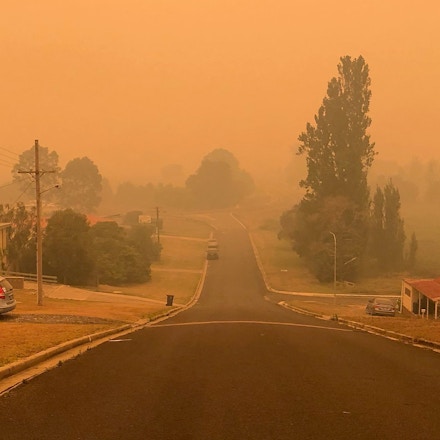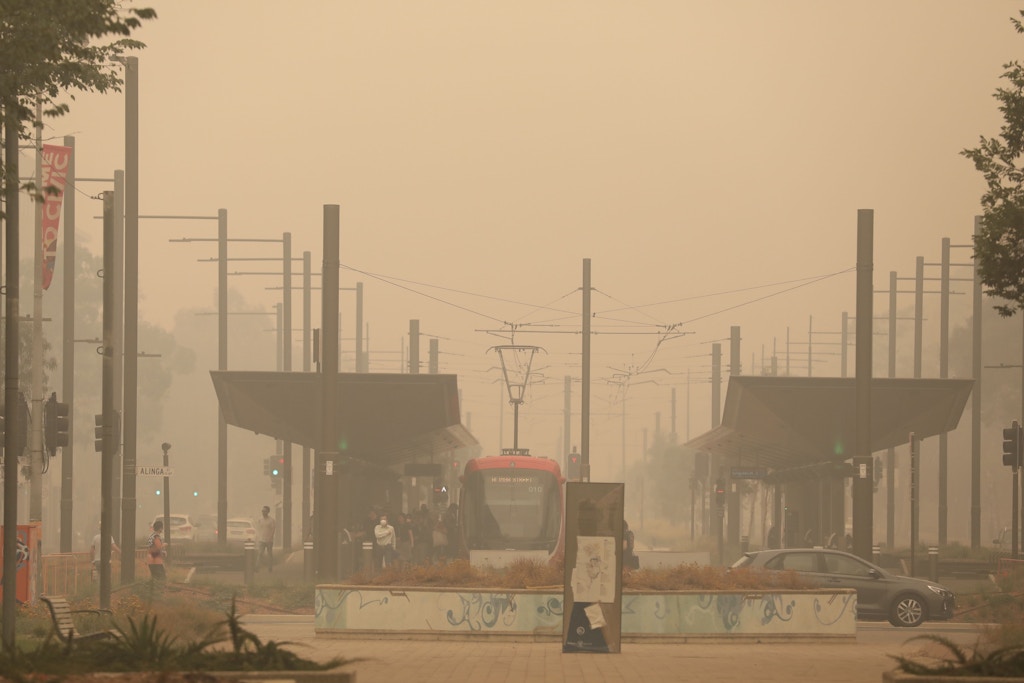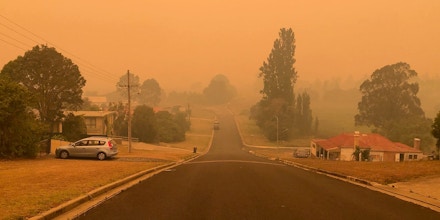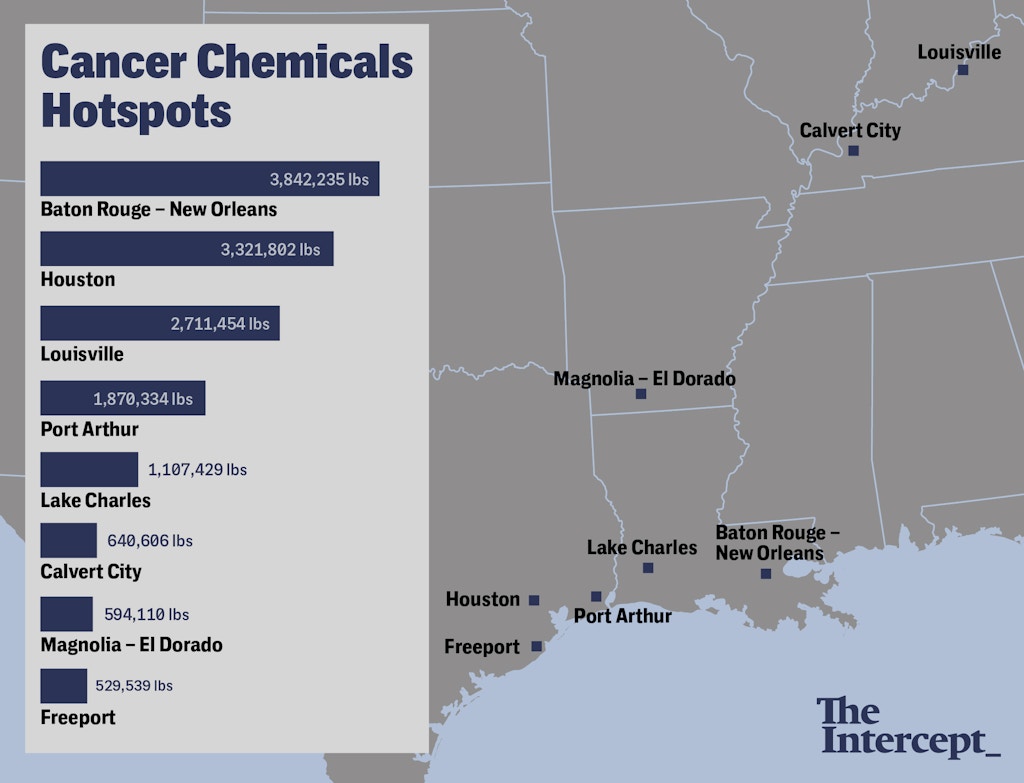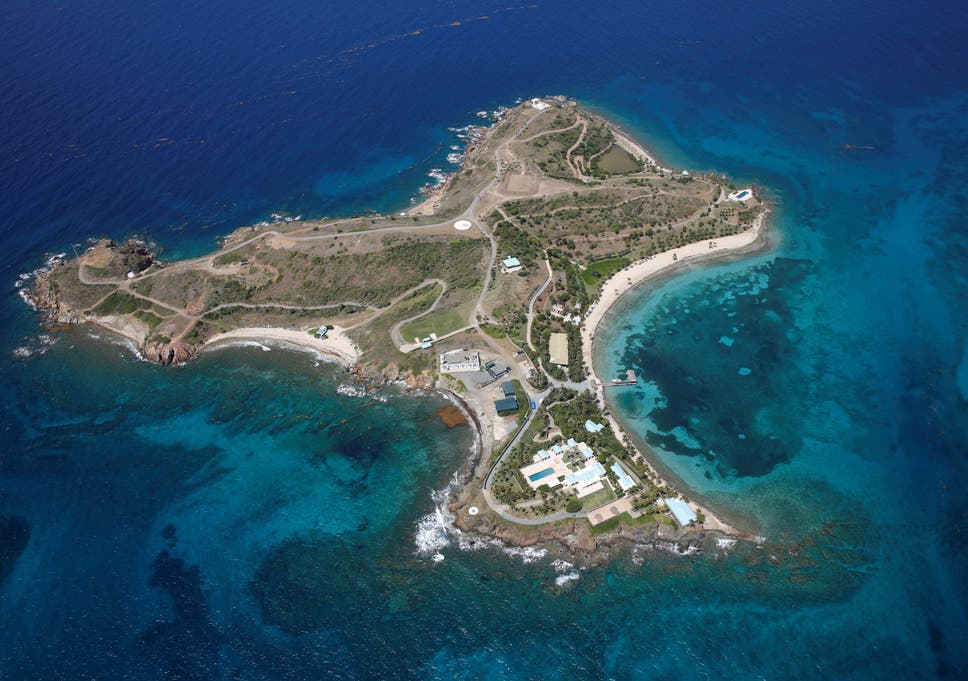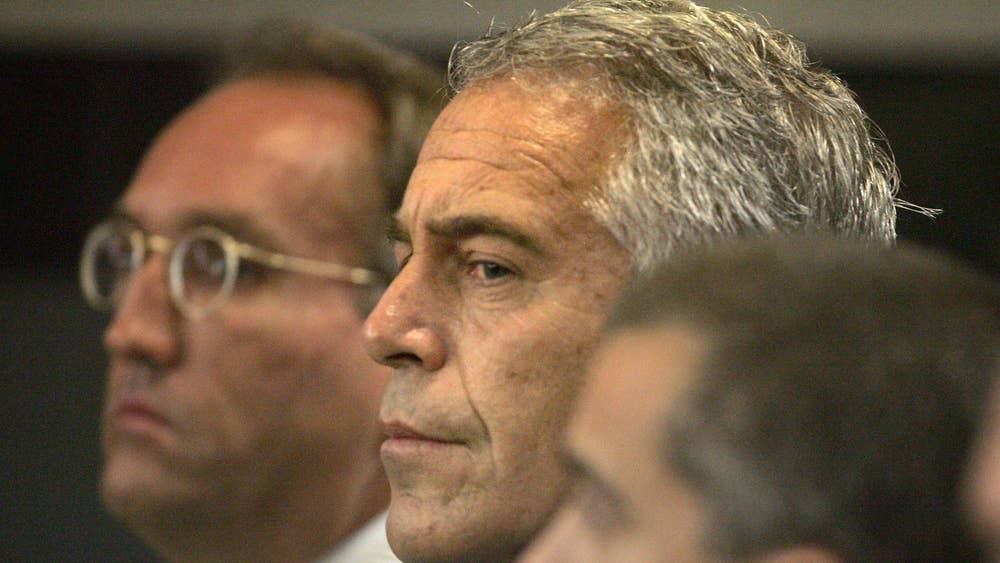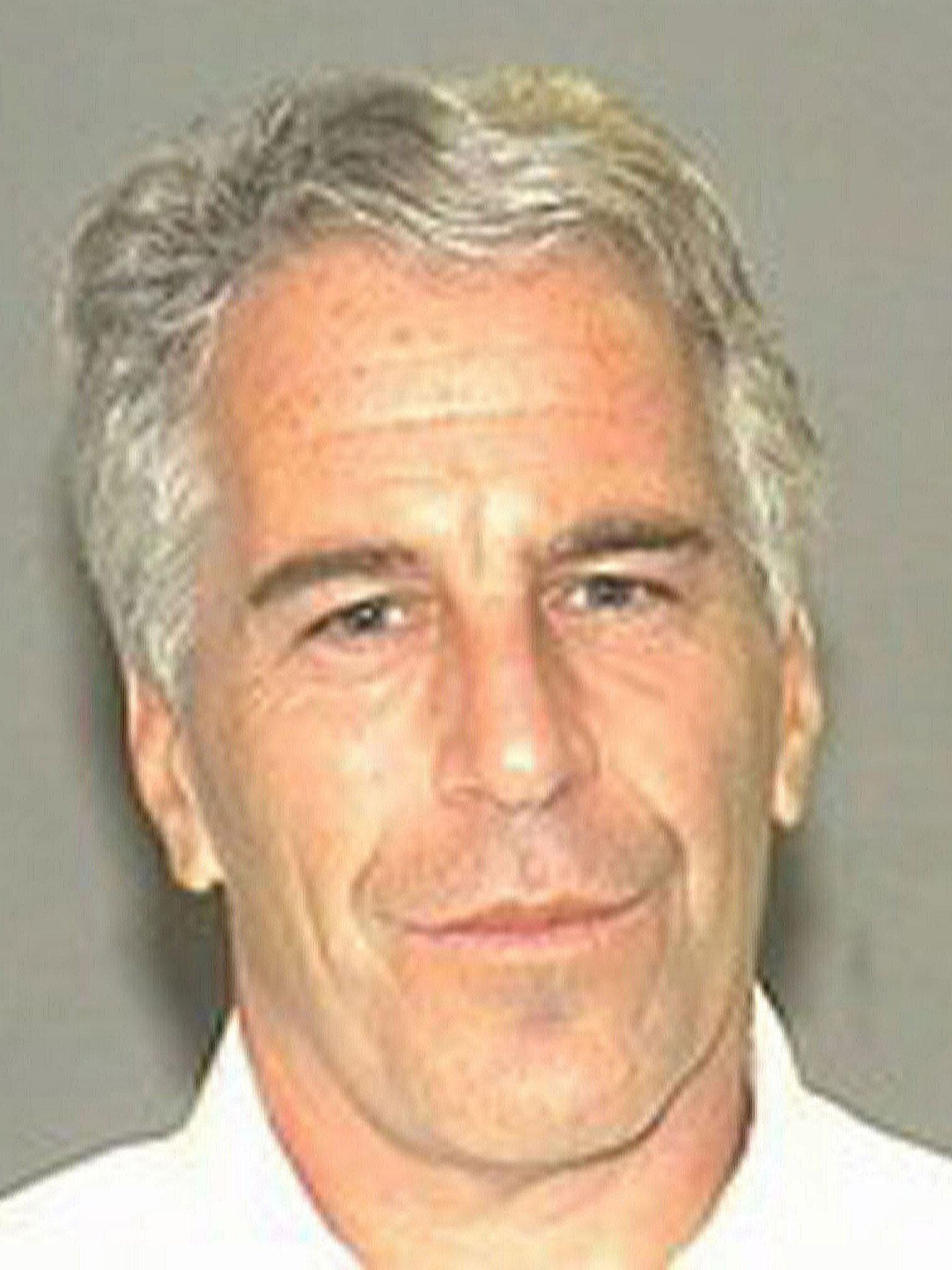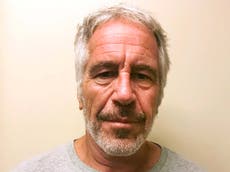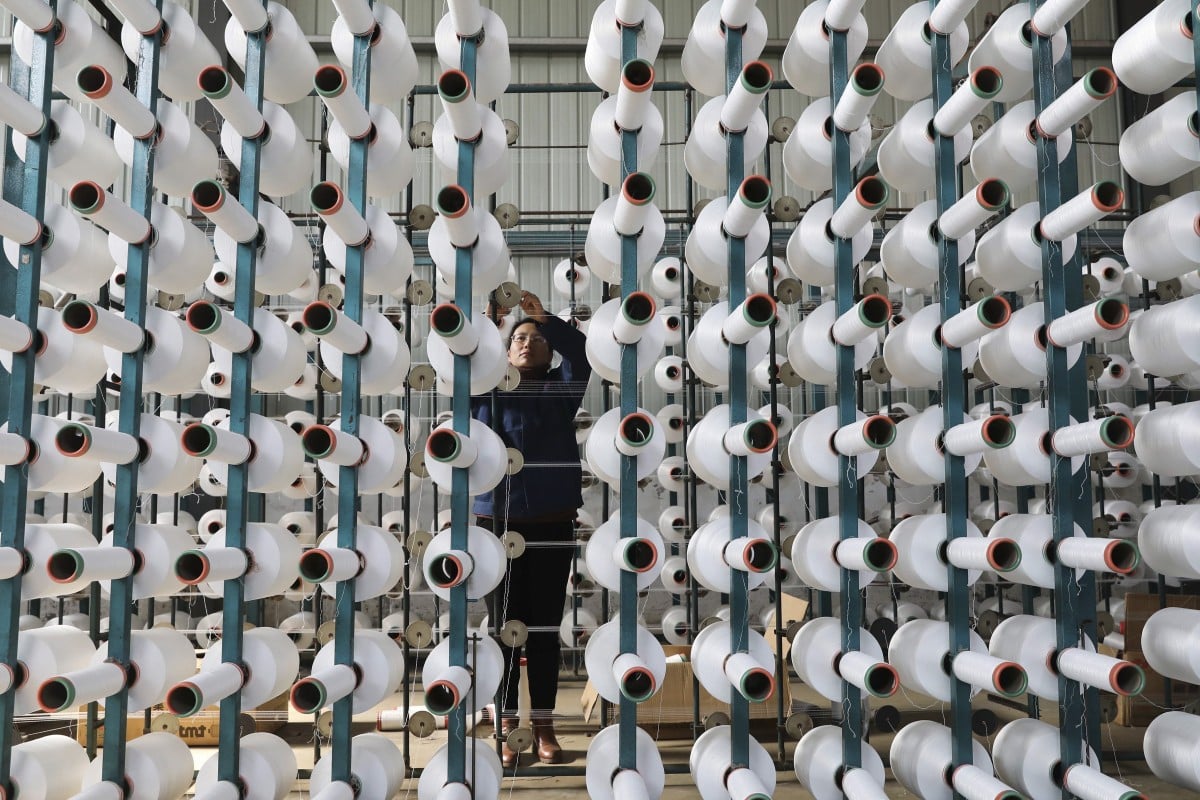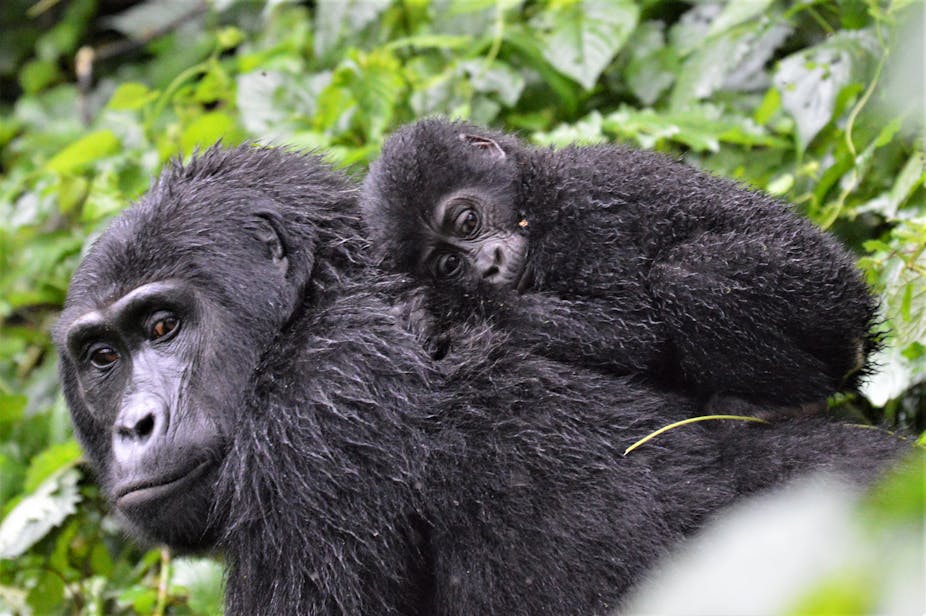James Risen January 9 2020,
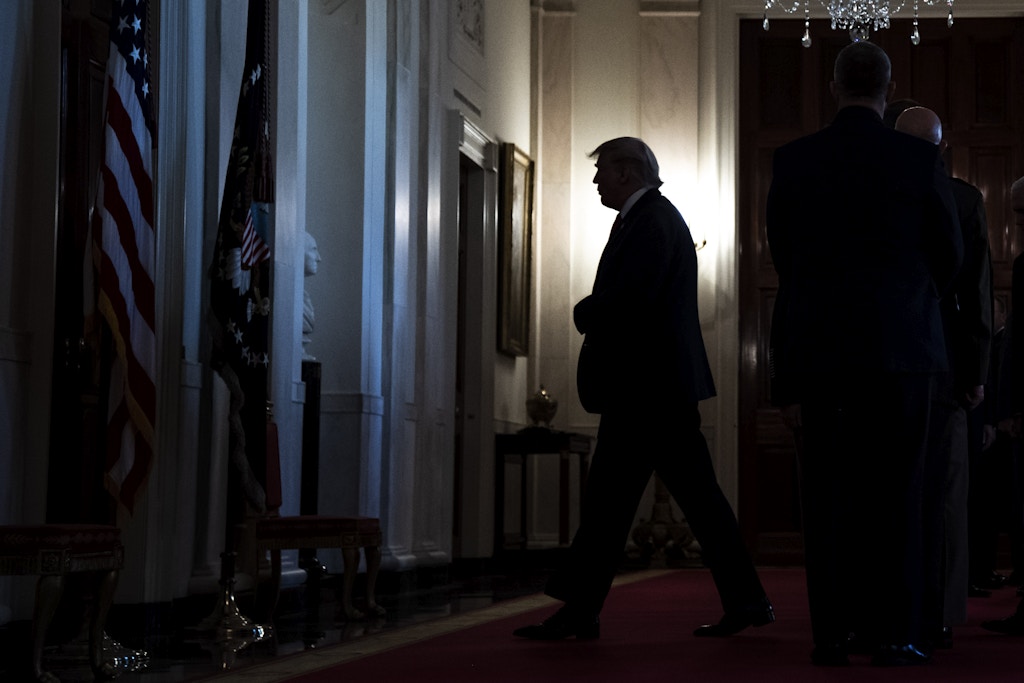
President Donald Trump departs after addressing the nation
from the White House on Jan. 8, 2020.
Photo: Jabin Botsford/The Washington Post via Getty Images
DONALD TRUMP HAS DRAGGED America into a moral abyss. And yet Congress, the press, and the public are unwilling to admit that we are now standing in blood. The nation is enabling a murderous demagogue, and we are all complicit.
The president of the United States has murdered a high-ranking official of a foreign government. The assassination last week of Iranian Maj. Gen. Qassim Suleimani was a state-sponsored murder.
But no one in the Washington establishment seems prepared to come out and say the hard truth: Donald Trump is a murderer.
This criminal moment has been a long time coming.
The United States has an assassination ban. The ban was put in place following disclosures by the Church Committee in the 1970s, which revealed that the CIA had secretly attempted to kill a series of foreign leaders, most notably Cuba’s Fidel Castro.
At the time of the Senate committee’s investigation, no one in the American government or media publicly defended assassination as a tool of a modern nation-state. It was simply not the accepted practice of a democracy that wanted to serve as a role model for the world.
But the reform-minded 1970s now seem quaint in a nation whose greatest military innovation in the 21st century has been the targeted killing of individuals by remote control.

Related
With Suleimani Assassination, Trump Is Doing the Bidding of Washington’s Most Vile Cabal
For the last two decades, both Republican and Democratic presidents have worked quietly to skirt the assassination ban in order to take advantage of new aviation, missile guidance, and surveillance technologies to find and kill individuals all over the world. To launch targeted killings without violating the assassination ban, presidents have counted on compliant government lawyers to issue secret legal opinions that rubber-stamped their actions.
The Clinton administration started this process in 1998, in the wake of the bombings of two U.S. embassies in East Africa by Al Qaeda. In response, the White House decided to launch cruise missile strikes against what they claimed were terrorist training camps near Khost, Afghanistan. The primary target was Osama bin Laden.
At the time, I was covering national security and intelligence for the New York Times. I asked White House officials whether the action had violated the assassination ban. They responded that it had not because the target was the “command and control infrastructure” of Al Qaeda. When I asked them what they meant by “command and control infrastructure,” they reluctantly admitted that the “command and control infrastructure” of Al Qaeda was its leadership, meaning bin Laden. I realized that the Clinton administration’s lawyers had prepared a euphemism-laden opinion to provide legal cover for Bill Clinton and his advisers. That was the beginning of what has become a very long pattern.
After 9/11, political concerns about the assassination ban went by the boards because there was such overwhelming public support for the new, so-called global war on terror. But the government’s lawyers still worried about the assassination ban and other rules and regulations governing the use of state-sponsored violence.
That’s why the congressional legislation known as the Authorization for Use of Military Force has been so important to government lawyers. The AUMF, passed by Congress just days after 9/11, has provided the basic legal authorization for counterterrorism strikes ever since.
Armed with the AUMF and other legal backstops, the Bush and Obama administrations began to kill at will. The killing has never stopped. It has been a vicious campaign that has claimed countless innocent lives, destabilized nations, and been almost entirely counterproductive. It has made Americans numb to endless war.
But the United States gained public and legal support for targeted killings only for what it described as the asymmetric fight against terrorism. It targeted suspected terrorists: “non-state actors.”
That is where Trump has now crossed a clear line. He conducted a drone strike to murder the official who served as Iran’s viceroy in Iraq. Qassim Suleimani was most definitely not a “non-state actor.”
Suleimani was the head of the Quds Force, the elite external operations arm of the Islamic Revolutionary Guard Corps, which operated with impunity throughout Iraq under his leadership. He ran Iran’s ground campaign against ISIS in Iraq, in parallel to the American air campaign, and employed Shia militias and their ruthless tactics to defeat the cult-like group. The United States has been happy to take credit for the victory over ISIS in Iraq, without admitting that it relied heavily upon Suleimani’s horrific paramilitary actions and his strategic acumen.
But he was much more than a special forces commander or spymaster; he was Iran’s most important envoy, and he served as Tehran’s intimidating political fixer throughout the Middle East.
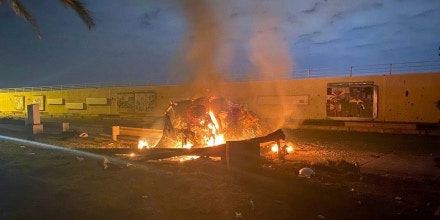
Read Our Complete CoverageTargeting Iran
He dominated the political landscape in Baghdad. In November, The Intercept and the New York Times reported on leaked Iranian intelligence cables that publicly documented Iran’s deep influence in Iraq from Iran’s perspective for the first time. What jumped off the pages in the leaked cables was Suleimani’s personal political power in Iraq and his hold on many of Iraq’s top political, military, and security officials.
Last October, Suleimani intervened at the highest levels of Iraqi politics to keep Iraqi Prime Minister Adil Abdul-Mahdi in office amid massive protests and calls for his resignation. American officials serving in Iraq always thought they heard Suleimani’s footsteps.
In April 2019, the Trump administration designated the Revolutionary Guards, and Suleimani’s Quds Force, terrorist organizations. It was the first time the United States had ever designated a unit of another government a terrorist group.
At the time, the long-debated action was broadly portrayed as just another step in Trump’s reckless campaign to ratchet up economic sanctions on Iran and Iranian leaders. But I believe that the terrorist designation was Suleimani’s death warrant. I would not be surprised if the drone strike against Suleimani was supported by a secret legal opinion claiming that since he was the leader of a designated terrorist organization, he was a legitimate target in the war on terror under the AUMF and other counterterrorism legal guidelines. I’m sure that the lawyers at the National Security Council, the White House, and the Justice Department are sleeping well, knowing that they found a quick legal fix to allow Donald Trump to murder a foreign government official.
If we had a real Congress, there would be a congressional investigation into whatever lame, paper-thin legal rationalizations have been written by government lawyers to back up this murder. Instead, we are left with the nagging realization that Trump has just found a new loophole to circumvent the assassination ban.
But such actions prompt responses. Iran’s parliament has passed a bill designating all U.S. military forces terrorists.
The threat of retaliation has always been one of the most potent arguments against the use of assassination as a national security tool: It can prompt other countries to target Americans for assassination. And if international strictures against assassination are eliminated, we will be one step closer to the abandonment of the laws of war.

President Donald Trump departs after addressing the nation
from the White House on Jan. 8, 2020.
Photo: Jabin Botsford/The Washington Post via Getty Images
DONALD TRUMP HAS DRAGGED America into a moral abyss. And yet Congress, the press, and the public are unwilling to admit that we are now standing in blood. The nation is enabling a murderous demagogue, and we are all complicit.
The president of the United States has murdered a high-ranking official of a foreign government. The assassination last week of Iranian Maj. Gen. Qassim Suleimani was a state-sponsored murder.
But no one in the Washington establishment seems prepared to come out and say the hard truth: Donald Trump is a murderer.
This criminal moment has been a long time coming.
The United States has an assassination ban. The ban was put in place following disclosures by the Church Committee in the 1970s, which revealed that the CIA had secretly attempted to kill a series of foreign leaders, most notably Cuba’s Fidel Castro.
At the time of the Senate committee’s investigation, no one in the American government or media publicly defended assassination as a tool of a modern nation-state. It was simply not the accepted practice of a democracy that wanted to serve as a role model for the world.
But the reform-minded 1970s now seem quaint in a nation whose greatest military innovation in the 21st century has been the targeted killing of individuals by remote control.

Related
With Suleimani Assassination, Trump Is Doing the Bidding of Washington’s Most Vile Cabal
For the last two decades, both Republican and Democratic presidents have worked quietly to skirt the assassination ban in order to take advantage of new aviation, missile guidance, and surveillance technologies to find and kill individuals all over the world. To launch targeted killings without violating the assassination ban, presidents have counted on compliant government lawyers to issue secret legal opinions that rubber-stamped their actions.
The Clinton administration started this process in 1998, in the wake of the bombings of two U.S. embassies in East Africa by Al Qaeda. In response, the White House decided to launch cruise missile strikes against what they claimed were terrorist training camps near Khost, Afghanistan. The primary target was Osama bin Laden.
At the time, I was covering national security and intelligence for the New York Times. I asked White House officials whether the action had violated the assassination ban. They responded that it had not because the target was the “command and control infrastructure” of Al Qaeda. When I asked them what they meant by “command and control infrastructure,” they reluctantly admitted that the “command and control infrastructure” of Al Qaeda was its leadership, meaning bin Laden. I realized that the Clinton administration’s lawyers had prepared a euphemism-laden opinion to provide legal cover for Bill Clinton and his advisers. That was the beginning of what has become a very long pattern.
After 9/11, political concerns about the assassination ban went by the boards because there was such overwhelming public support for the new, so-called global war on terror. But the government’s lawyers still worried about the assassination ban and other rules and regulations governing the use of state-sponsored violence.
That’s why the congressional legislation known as the Authorization for Use of Military Force has been so important to government lawyers. The AUMF, passed by Congress just days after 9/11, has provided the basic legal authorization for counterterrorism strikes ever since.
Armed with the AUMF and other legal backstops, the Bush and Obama administrations began to kill at will. The killing has never stopped. It has been a vicious campaign that has claimed countless innocent lives, destabilized nations, and been almost entirely counterproductive. It has made Americans numb to endless war.
But the United States gained public and legal support for targeted killings only for what it described as the asymmetric fight against terrorism. It targeted suspected terrorists: “non-state actors.”
That is where Trump has now crossed a clear line. He conducted a drone strike to murder the official who served as Iran’s viceroy in Iraq. Qassim Suleimani was most definitely not a “non-state actor.”
Suleimani was the head of the Quds Force, the elite external operations arm of the Islamic Revolutionary Guard Corps, which operated with impunity throughout Iraq under his leadership. He ran Iran’s ground campaign against ISIS in Iraq, in parallel to the American air campaign, and employed Shia militias and their ruthless tactics to defeat the cult-like group. The United States has been happy to take credit for the victory over ISIS in Iraq, without admitting that it relied heavily upon Suleimani’s horrific paramilitary actions and his strategic acumen.
But he was much more than a special forces commander or spymaster; he was Iran’s most important envoy, and he served as Tehran’s intimidating political fixer throughout the Middle East.

Read Our Complete CoverageTargeting Iran
He dominated the political landscape in Baghdad. In November, The Intercept and the New York Times reported on leaked Iranian intelligence cables that publicly documented Iran’s deep influence in Iraq from Iran’s perspective for the first time. What jumped off the pages in the leaked cables was Suleimani’s personal political power in Iraq and his hold on many of Iraq’s top political, military, and security officials.
Last October, Suleimani intervened at the highest levels of Iraqi politics to keep Iraqi Prime Minister Adil Abdul-Mahdi in office amid massive protests and calls for his resignation. American officials serving in Iraq always thought they heard Suleimani’s footsteps.
In April 2019, the Trump administration designated the Revolutionary Guards, and Suleimani’s Quds Force, terrorist organizations. It was the first time the United States had ever designated a unit of another government a terrorist group.
At the time, the long-debated action was broadly portrayed as just another step in Trump’s reckless campaign to ratchet up economic sanctions on Iran and Iranian leaders. But I believe that the terrorist designation was Suleimani’s death warrant. I would not be surprised if the drone strike against Suleimani was supported by a secret legal opinion claiming that since he was the leader of a designated terrorist organization, he was a legitimate target in the war on terror under the AUMF and other counterterrorism legal guidelines. I’m sure that the lawyers at the National Security Council, the White House, and the Justice Department are sleeping well, knowing that they found a quick legal fix to allow Donald Trump to murder a foreign government official.
If we had a real Congress, there would be a congressional investigation into whatever lame, paper-thin legal rationalizations have been written by government lawyers to back up this murder. Instead, we are left with the nagging realization that Trump has just found a new loophole to circumvent the assassination ban.
But such actions prompt responses. Iran’s parliament has passed a bill designating all U.S. military forces terrorists.
The threat of retaliation has always been one of the most potent arguments against the use of assassination as a national security tool: It can prompt other countries to target Americans for assassination. And if international strictures against assassination are eliminated, we will be one step closer to the abandonment of the laws of war.
---30---
TRUMP ADMINISTRATION FAILED TO CONVINCE MEMBERS OF CONGRESS ITS ASSASSINATION OF SULEIMANI WAS JUSTIFIED
Alex Emmons January 8 2020
FOLLOWING CLASSIFIED BRIEFINGS in the House and Senate, members of Congress said the Trump administration had failed to present evidence that the assassination of Iranian Maj. Gen. Qassim Suleimani had averted an “imminent threat” to Americans in the Middle East.
“We did not get information inside that briefing that there was a specific, imminent threat that we were halting through the operation conducted last Thursday night,” Sen. Chris Murphy, D-Conn., told reporters. “And I can say I was surprised and saddened to not have that information before us, I think it is likely because it doesn’t exist.”
Senate Minority Leader Chuck Schumer told reporters that 97 senators attended the briefing, and 15 got to ask questions. “There were so many important questions that they did not answer,” said Schumer of Wednesday’s briefers, Defense Secretary Mark Esper, Secretary of State Mike Pompeo, CIA director Gina Haspel, and Gen. Mark Milley, the chair of the Joint Chiefs of Staff.
“As the questions began to get tough, they walked out,” Schumer said. “I’ve asked for a commitment that they all come back within a week; we have not gotten that commitment.”
This was the Trump administration’s first briefing to all members of Congress on the operation, which was carried out last Thursday. It comes after Iran retaliated Tuesday night by firing ballistic missiles at an Iraqi military base, which houses some U.S. military personnel. President Donald Trump announced in remarks Wednesday morning that no Americans or Iraqis had been killed in the Iranian strike. The Pentagon suspects that the Iranians intentionally avoided killing people, according to news reports.
The claim that the assassination was in response to a forthcoming “imminent threat” to American troops or diplomats in the region has been central to forming the Trump administration’s legal justification for the operation.
After the operation last week, Pompeo told CNN that Suleimani was plotting an action that would put “dozens if not hundreds of America lives at risk.” Esper told reporters this week that it was “more fair to say” that the threat was “days,” as opposed to weeks, away. But when asked for details this week about what the imminent threat was, Pompeo sidestepped the question by referring to a previous December 27 rocket attack by an Iranian-backed militia in Iraq that killed an American contractor.
Reactions from Democrats in the House were similarly critical of the lack of evidence Trump apparently had before ordering the assassination.
“Every time we were told, ‘Absolutely, there was an imminent threat you should just see the information, it’s really imminent.’ And nothing was shown to us,” said Rep. Mark Pocan, D-Wis., at a news conference following the House briefing. “Over and over and over the question was asked. And nothing more was given to us about this.”
Following the House briefing, Rep. Pramila Jayapal, D-Wash., said Trump “had no evidence of an imminent threat or attack, and we say that coming from a classified briefing. Where again, there was no raw evidence presented that there was an imminent threat.”
House Speaker Nancy Pelosi announced on Wednesday that the House will vote on a war powers resolution that would direct Trump to terminate any hostilities by U.S. armed forces against Iran, unless Congress authorizes them.
Even some Republican senators, most prominently Utah Republican Mike Lee, said they were open to a war powers resolution after the briefing, which Lee found infuriating in its lack of specifics. “I walked into the briefing undecided; I walked out decided,” said Lee. “Specifically because of what happened in that briefing.”
Fox News cut away from Lee as he told reporters that the briefing was “probably the worst [briefing] I’ve seen, at least on a military issue, in the nine years I’ve served in the U.S. Senate.”
“What we were told over and over and over again was, ‘Look, this action was necessary, this was a bad guy, we had to do it, and we can’t have division, we can’t have dissension within our ranks, within our government, or it sends the wrong signal to the Iranians,’ and I think that’s completely wrong,” Lee told reporters.
Alex Emmons January 8 2020
FOLLOWING CLASSIFIED BRIEFINGS in the House and Senate, members of Congress said the Trump administration had failed to present evidence that the assassination of Iranian Maj. Gen. Qassim Suleimani had averted an “imminent threat” to Americans in the Middle East.
“We did not get information inside that briefing that there was a specific, imminent threat that we were halting through the operation conducted last Thursday night,” Sen. Chris Murphy, D-Conn., told reporters. “And I can say I was surprised and saddened to not have that information before us, I think it is likely because it doesn’t exist.”
Senate Minority Leader Chuck Schumer told reporters that 97 senators attended the briefing, and 15 got to ask questions. “There were so many important questions that they did not answer,” said Schumer of Wednesday’s briefers, Defense Secretary Mark Esper, Secretary of State Mike Pompeo, CIA director Gina Haspel, and Gen. Mark Milley, the chair of the Joint Chiefs of Staff.
“As the questions began to get tough, they walked out,” Schumer said. “I’ve asked for a commitment that they all come back within a week; we have not gotten that commitment.”
This was the Trump administration’s first briefing to all members of Congress on the operation, which was carried out last Thursday. It comes after Iran retaliated Tuesday night by firing ballistic missiles at an Iraqi military base, which houses some U.S. military personnel. President Donald Trump announced in remarks Wednesday morning that no Americans or Iraqis had been killed in the Iranian strike. The Pentagon suspects that the Iranians intentionally avoided killing people, according to news reports.
The claim that the assassination was in response to a forthcoming “imminent threat” to American troops or diplomats in the region has been central to forming the Trump administration’s legal justification for the operation.
After the operation last week, Pompeo told CNN that Suleimani was plotting an action that would put “dozens if not hundreds of America lives at risk.” Esper told reporters this week that it was “more fair to say” that the threat was “days,” as opposed to weeks, away. But when asked for details this week about what the imminent threat was, Pompeo sidestepped the question by referring to a previous December 27 rocket attack by an Iranian-backed militia in Iraq that killed an American contractor.
Reactions from Democrats in the House were similarly critical of the lack of evidence Trump apparently had before ordering the assassination.
“Every time we were told, ‘Absolutely, there was an imminent threat you should just see the information, it’s really imminent.’ And nothing was shown to us,” said Rep. Mark Pocan, D-Wis., at a news conference following the House briefing. “Over and over and over the question was asked. And nothing more was given to us about this.”
Following the House briefing, Rep. Pramila Jayapal, D-Wash., said Trump “had no evidence of an imminent threat or attack, and we say that coming from a classified briefing. Where again, there was no raw evidence presented that there was an imminent threat.”
House Speaker Nancy Pelosi announced on Wednesday that the House will vote on a war powers resolution that would direct Trump to terminate any hostilities by U.S. armed forces against Iran, unless Congress authorizes them.
Even some Republican senators, most prominently Utah Republican Mike Lee, said they were open to a war powers resolution after the briefing, which Lee found infuriating in its lack of specifics. “I walked into the briefing undecided; I walked out decided,” said Lee. “Specifically because of what happened in that briefing.”
Fox News cut away from Lee as he told reporters that the briefing was “probably the worst [briefing] I’ve seen, at least on a military issue, in the nine years I’ve served in the U.S. Senate.”
“What we were told over and over and over again was, ‘Look, this action was necessary, this was a bad guy, we had to do it, and we can’t have division, we can’t have dissension within our ranks, within our government, or it sends the wrong signal to the Iranians,’ and I think that’s completely wrong,” Lee told reporters.

Read Our Complete CoverageTargeting Iran
Hawkish members of the Republican Party stood by the reasoning presented by the Trump administration. Speaking to reporters afterward, Sen. Marco Rubio, R-Fla., cited a “string of intelligence that shows there was ‘near-term planning’ at a different level than what we have seen in the past.”
“Combined with recent in events, just in the last couple months, an increase not just in the volume of attacks but in the lethality of the weapons they chose to use, combined with that string of intelligence, combined with the fact that he was traveling across the region, all of it put together combined with the fact they had just tried to storm our embassy, you put all of that together and you reach the reasonable conclusion that something really bad could happen in the near term, and if we don’t act now, dozens if not hundreds of Americans could die,” Rubio said.
Members of Congress also said that the briefers invoked the 2002 Authorization for the Use of Military Force Resolution as the legal basis for the strike. The resolution, originally passed 17 years ago, was meant to sanction military force against Saddam Hussein’s government, and the text of it only authorizes force to defend “against the continuing threat posed by Iraq.”
Rep. Barbara Lee, D-Calif., told reporters following the briefing that it was unacceptable for the 2002 AUMF to serve as the legal basis for the strike against Suleimani. “First of all, probably less than 25 percent of members of Congress here today were here in 2002,” Lee said. “Which means they have not had the opportunity to voice their opinion or cast their vote for any authorizations to use military force for their constituents.”
Hawkish members of the Republican Party stood by the reasoning presented by the Trump administration. Speaking to reporters afterward, Sen. Marco Rubio, R-Fla., cited a “string of intelligence that shows there was ‘near-term planning’ at a different level than what we have seen in the past.”
“Combined with recent in events, just in the last couple months, an increase not just in the volume of attacks but in the lethality of the weapons they chose to use, combined with that string of intelligence, combined with the fact that he was traveling across the region, all of it put together combined with the fact they had just tried to storm our embassy, you put all of that together and you reach the reasonable conclusion that something really bad could happen in the near term, and if we don’t act now, dozens if not hundreds of Americans could die,” Rubio said.
Members of Congress also said that the briefers invoked the 2002 Authorization for the Use of Military Force Resolution as the legal basis for the strike. The resolution, originally passed 17 years ago, was meant to sanction military force against Saddam Hussein’s government, and the text of it only authorizes force to defend “against the continuing threat posed by Iraq.”
Rep. Barbara Lee, D-Calif., told reporters following the briefing that it was unacceptable for the 2002 AUMF to serve as the legal basis for the strike against Suleimani. “First of all, probably less than 25 percent of members of Congress here today were here in 2002,” Lee said. “Which means they have not had the opportunity to voice their opinion or cast their vote for any authorizations to use military force for their constituents.”
